How to remove rust from stainless steel without damaging the surface
Have your beloved pots and pans gone rusty? Here's how to easily remove rust from stainless steel to restore your items to their best
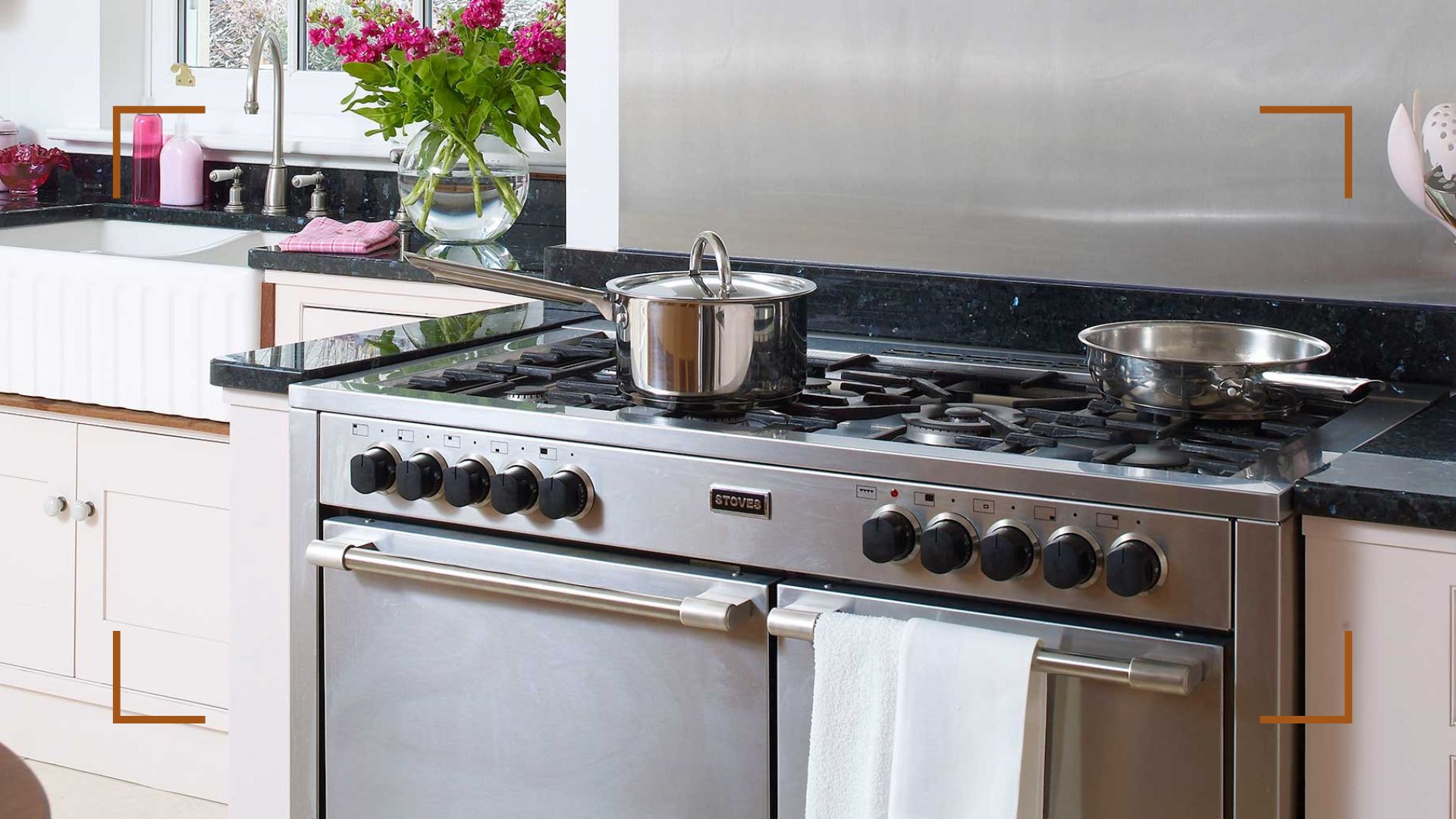

Amy Hunt
You might think stainless steel is completely immune to rust and tarnish but think again, because it can happen and does happen more than you'd think.
When cleaning a kitchen it can be tricky to clean stainless steel because it is susceptible to rust, despite it being a resilient material. Whether cleaning stainless steel pans or cleaning a stainless steel kitchen sink it's imperative to know how to tackle the task effectively to avoid having to remove rust.
Stainless steel, an alloy of iron that contains ten per cent chromium, is one of the most commonly used materials within kitchens, whether it’s countertops, sinks, appliances, cookware or utensils because of its durability and affordability.
"Even though 'stainless' is in its name, there are actually a few ways in which it can get stained, specifically with rust," says Petya Holevich, a cleaning specialist at Fantastic Services
If your stainless steel appliances or accessories have started to rust, don't fret. There are easy and effective ways to get their shine back.
How to remove rust from stainless steel
Most methods for removing rust from stainless steel involve removing the rust as gently as possible so that the oxide layer can re-form. If you catch the rust spots early enough, you shouldn't even be able to tell where they once were.
It's important to avoid scratching stainless steel cookware and surfaces when cleaning since this can cause deterioration and possibly leak metal in your food. Luckily, there are several ways to remove rust from stainless steel items that you can do easily for any household items you have
Sign up for the woman&home newsletter
Sign up to our free daily email for the latest royal and entertainment news, interesting opinion, expert advice on styling and beauty trends, and no-nonsense guides to the health and wellness questions you want answered.
Here's what you will need:
- Bicarbonate of soda: We recommend Amazon's choice 'Clean and Natural Bicarbonate of Soda'
- Soft bristle brush or sponge
- A microfibre cloth
1. Make a bicarbonate of soda paste
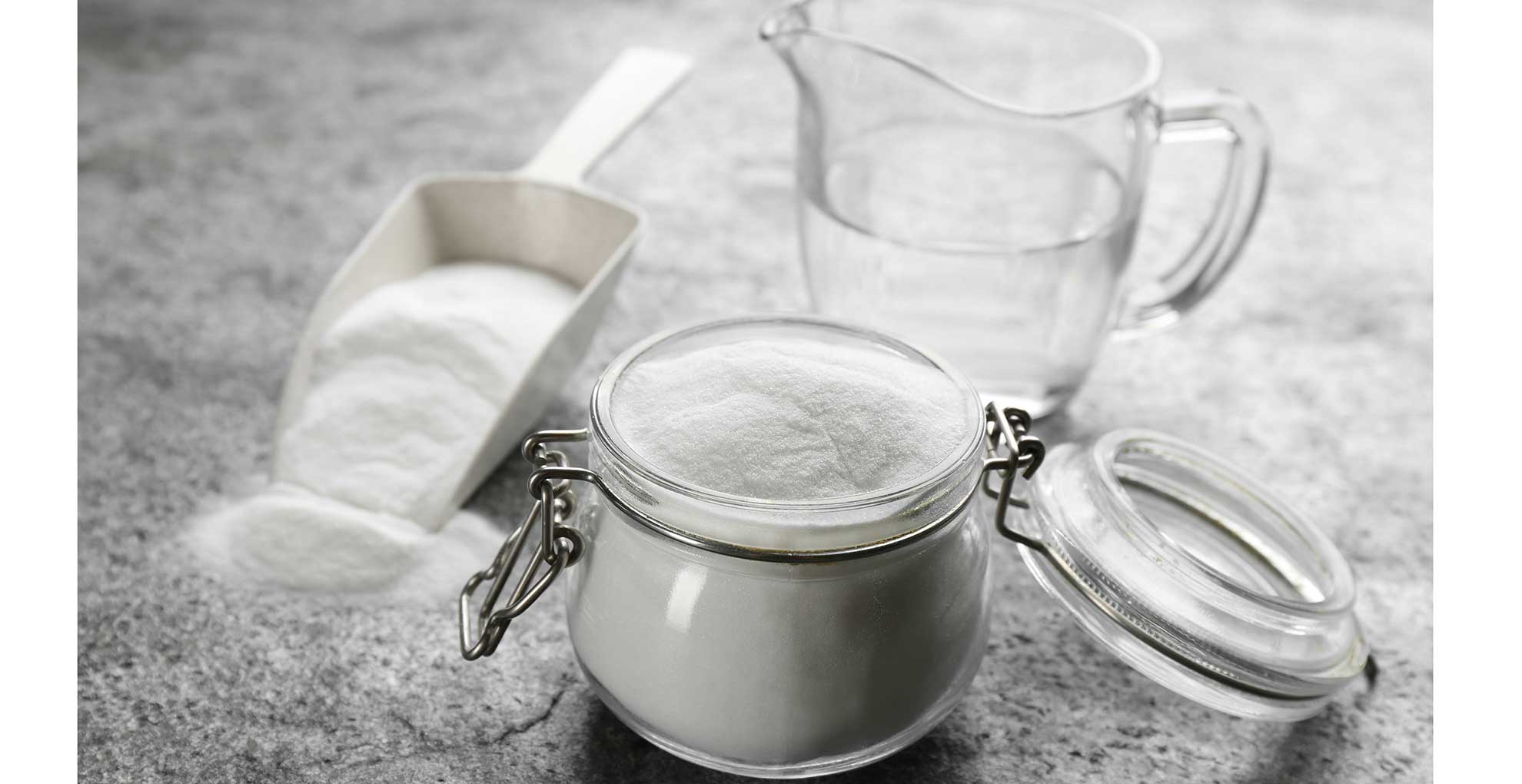
The fastest and gentlest way to remove rust spots from stainless steel is with bicarbonate soda, also commonly known as baking soda.
Cleaning with baking soda has become the go-to cleaning hack for all household items to offer a natural solution. Not only is this panty staple natural, but it's also highly effective – which is why cleaning an oven with baking soda is so popular.
To make a paste combine one tablespoon of bicarbonate of soda with two cups of water. Stir until the solution is well mixed.
2. Apply to the rusted area
Next, apply the baking soda paste directly to the affected area. Gently rub the paste onto the rusted surface using a gentle tool. "Use a soft-bristle brush, a sponge or a soft-bristle toothbrush to avoid scratching the stainless steel," suggests Petya. "Gently scrub the rusted area in a circular motion."
3. Rinse thoroughly
"After you’ve allowed the baking soda to sit on the rusty spot for around 30 minutes, rinse the treated area with water to remove any remaining residue," says Petya.
Rinse the natural cleaning solution off with a damp, clean microfibre cloth, making sure to gently scrub in the direction of the grain and marvel at the good-as-new surface.
For larger rusted areas, such as sinks or kitchen countertops, rinse the surface off thoroughly, leaving it damp. Then sprinkle a layer of bicarbonate soda, making sure every bit of rust is covered. Let it sit for 30 minutes to an hour, then rinse it off gently with a soft bristle brush. Dry with a paper towel once done.
What to avoid when removing rust from stainless steel
The method of removing rust depends on the material of the item in question. There are two common rust removal methods that don't work on stainless steel. Not only are they ineffective, but they can also damage items like cookware.
- Anything featuring chlorides: Salt and other chlorides can actually cause rust in stainless steel, so avoid cleaners with this ingredient at all costs, including bleach. However tempting it may be, resist the urge to bleach your stainless steel cookware. "It's crucial to note that certain substances, such as bleach or muriatic acid, should not be used on stainless steel," agrees Leo Watts, an accomplished DIY and home improvement expert and head of content at CNCSourced. "Though they might seem effective initially, they can cause long-term damage to the steel's integrity.
- Abrasive tools: This includes anything that has sand or grit texture. You don't want to damage the surface you're cleaning while trying to remove rust. This includes tools such as steel wool or metal brushes. "Avoid using steel wool or abrasive scouring pads because they can scratch and damage the stainless steel surface, leaving it more prone to rust in the future," warns Petya.
- Metal brushes or scrapers. "Metal brushes or scrapers can leave scratches on stainless steel surfaces so opt for soft-bristle brushes or non-abrasive tools to prevent damage," says Petya.
- Prolonged contact with acidic substances: While mild acids, such as vinegar, are useful for rust removal, prolonged contact with acidic substances can damage stainless steel (more on this later). "Rinse the surface thoroughly after using acidic solutions," says Petya.
- Using excessive force: "Avoid applying excessive force when you’re scrubbing to remove the rust," says Patya. "Instead, gentle and consistent pressure should usually be sufficient. Applying too much force can cause scratches or damage to the finish."
- Ignoring protective coatings: Some stainless steel products feature specially developed protective coatings that should always be taken into account when trying to clean or remove rust. "It is highly advised to avoid using harsh chemicals or abrasive tools that may damage the protective coatings," warns Petya.
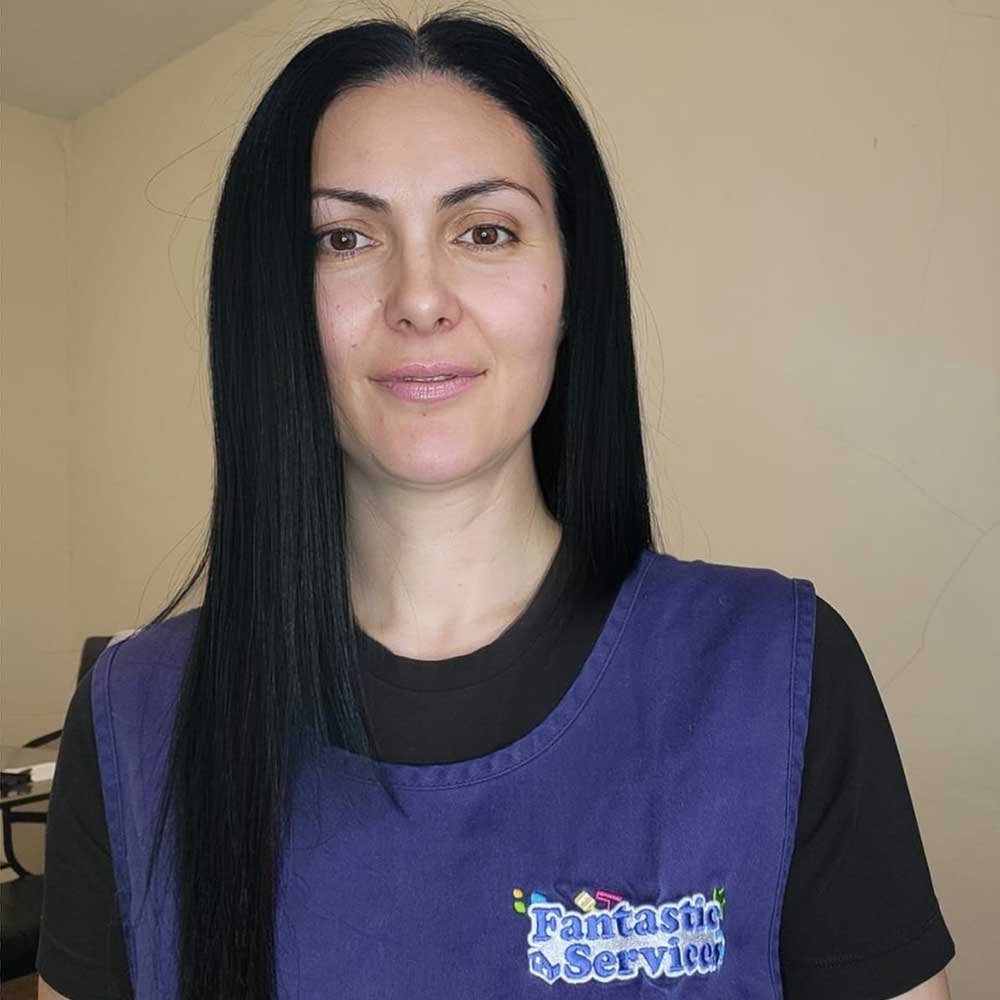
Petya Holevich is an experienced house cleaning and laundry expert with over 5 years of dedicated service at Fantastic Services. Her journey with the company not only contributed to the maintenance of immaculately clean domestic spaces but has also put her at the forefront of training new teams.
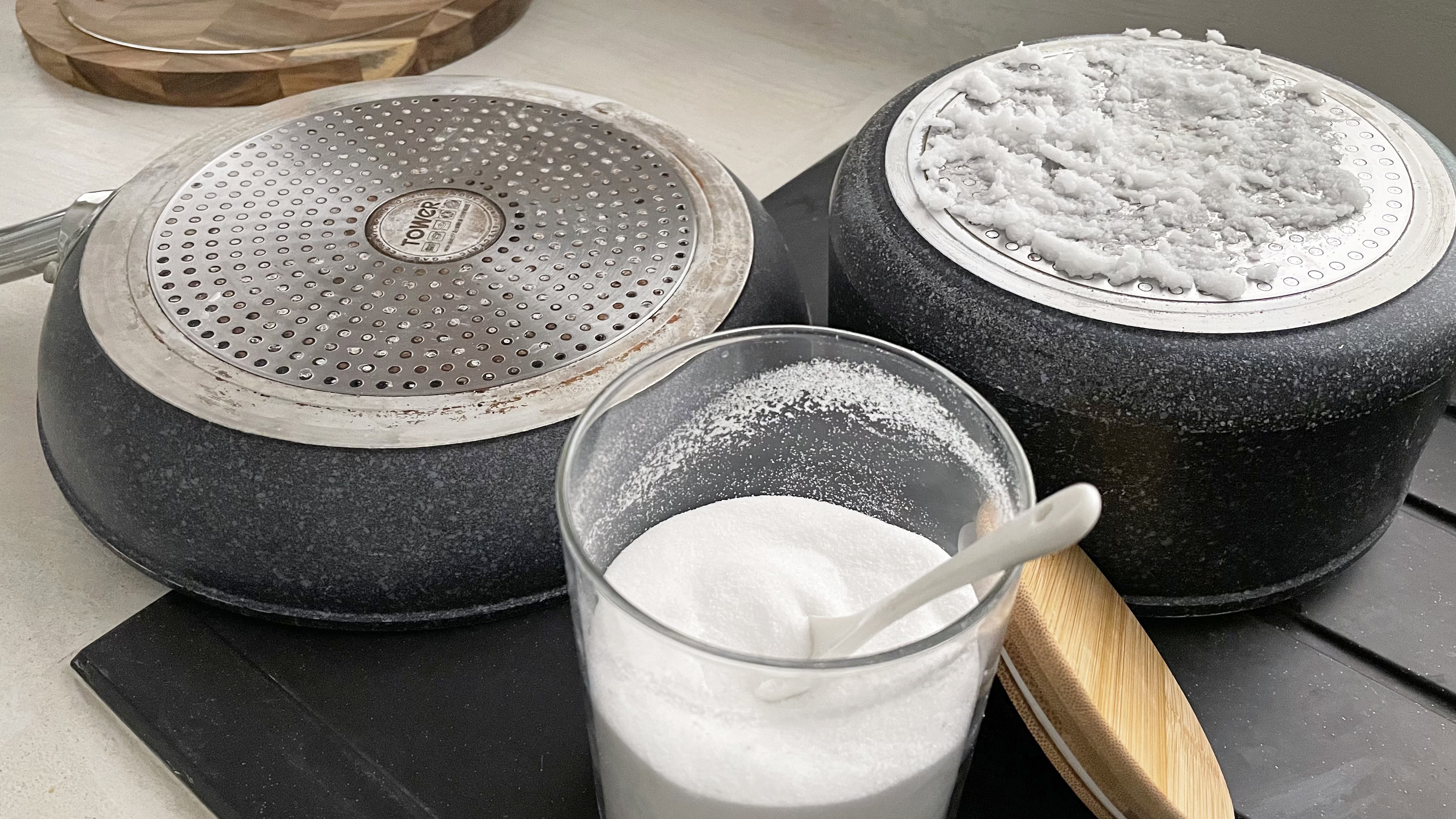
FAQ
Does vinegar remove rust from stainless steel?
Cleaning with vinegar is said to be good for removing rust from metal. "Yes, vinegar is an effective and natural solution for removing rust from stainless steel because it contains acetic acid, which can help dissolve the rust and make it easier to scrub away," Petya confirms. "To use this ingredient for rust removal, it’s recommended to use white vinegar because it’s less likely to stain or discolour the stainless steel surface."
"Also, keep in mind that vinegar is a cost-effective and eco-friendly solution, but depending on the severity of the rust, you may need to combine it with some amount of gentle scrubbing for optimal results."
However, there are experts who say stainless steel is one of the elements you shouldn't clean with vinegar. Interestingly, the true risk with vinegar comes if you use too much of it, too often. This means it's suitable for removing rust because it only requires a small amount and is not used often.
Does WD-40 remove rust from stainless steel?
"WD-40 is known for its rust-removing properties," says Leo. "However, when it comes to stainless steel, the results can sometimes be inconsistent. It largely depends on the rust's extent and depth." In conclusion, WD-40 does help to remove rust from stainless steel but its effectiveness depends on the severity of the rust, it is suitable for light to moderate rust.
To use this process start by spraying the WD-40 directly onto the rusted area. "Make sure that the affected area is thoroughly coated," says Petya. "Leave some time for soaking to allow the WD-40 to penetrate the rusted surface. Leave it for at least 10 to 15 minutes to allow it to work on the rust."
"After removing the rust, it's a good idea to clean the stainless steel surface with a mild detergent to remove any remaining residue from the cleaner."
"When using WD-40 to remove rust, make sure there’s proper ventilation in the room and protect the surrounding areas to prevent any unintended contact," advises Petya.
Leo is currently head of content at CNCSourced. With an MS in Control Engineering, Leo has built CNC machines and automation systems from scratch, but my expertise extends far beyond CNC. As a contractor and DIY enthusiast, I'm always exploring new techniques and materials to achieve the best results for myself and my clients.
What is the best homemade rust remover?
In addition to using your obvious organised pantry staples of baking soda and white vinegar, there are a few additional kitchen ingredients you can use. As Petya explains, "Not many people know that, but you can also use a raw potato to remove rust from stainless steel surfaces because these vegetables contain oxalic acid and act as commercial rust removers."
"To use it, cut the potato in half and add a few drops of dishwashing liquid to the cut sides. After that, follow the grain of the metal and rub it into the rusty area. This method takes longer to work than other ones and will require the potato to sit on the right spot for at least 4 hours. Afterwards, rinse, dry and wipe the area with a microfibre cloth."
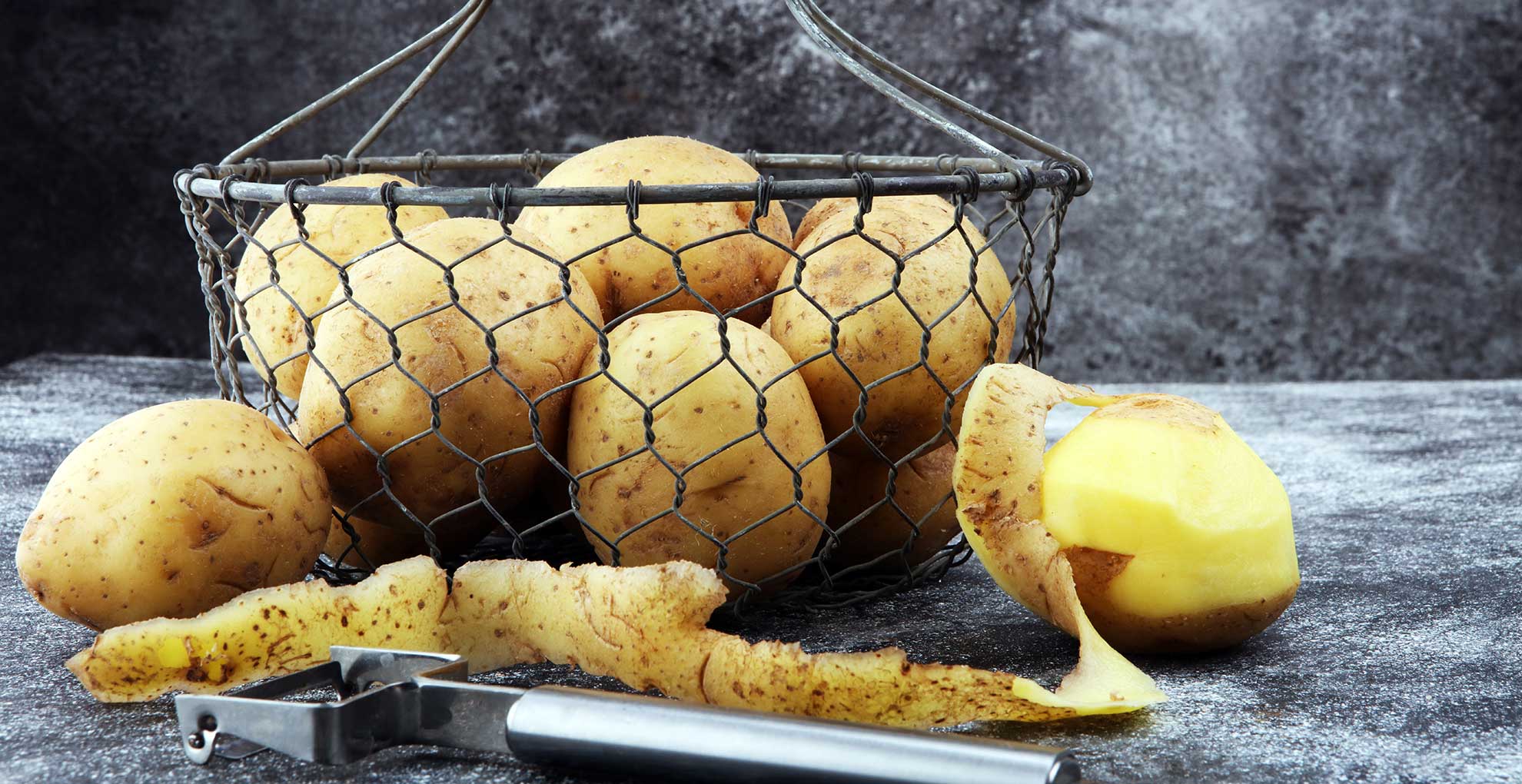
What causes rust on stainless steel?
Before you can remove rust from stainless steel, it is beneficial to know what caused it. Stainless steel combines with oxygen in the air to form a nearly invisible oxide layer instead of rust. Rust in stainless steel happens when this layer thins or wears off, especially when another chemical is introduced and reacts with the steel below the oxide layer. This can occur under specific conditions:
- Stainless steel can rust if exposed to saltwater or salty air for those living close to the water.
- Rust can also occur if the metal's surface is scratched with something abrasive, such as steel wool.
- When temperatures are extreme, like that of a gas flame, the oxide layer can wear off, leading to rust.
Finding a convenient method to remove rust from stainless steel will help you extend the life of your cookware and other items around the kitchen. With a little TLC and elbow grease, your favourite kitchen tools will look good as new.

Tamara is a highly experienced homes and interiors journalist with a career spanning over 22 years. Now the Lifestyle Editor of womanandhome.com, she previously spent 18 years working with the style teams at Country Homes & Interiors and Ideal Home. With these award-winning interior teams, she gained a wealth of knowledge and honed her skills and passion for styling and writing about every aspect of lifestyle and interiors.
A true homes and interiors expert, Tamara has been an ambassador for leading interior brands on multiple occasions, including appearing on Matalan’s The Show and presenting at top interior trend forecasting events such as the Autumn Fair and Spring Fair.